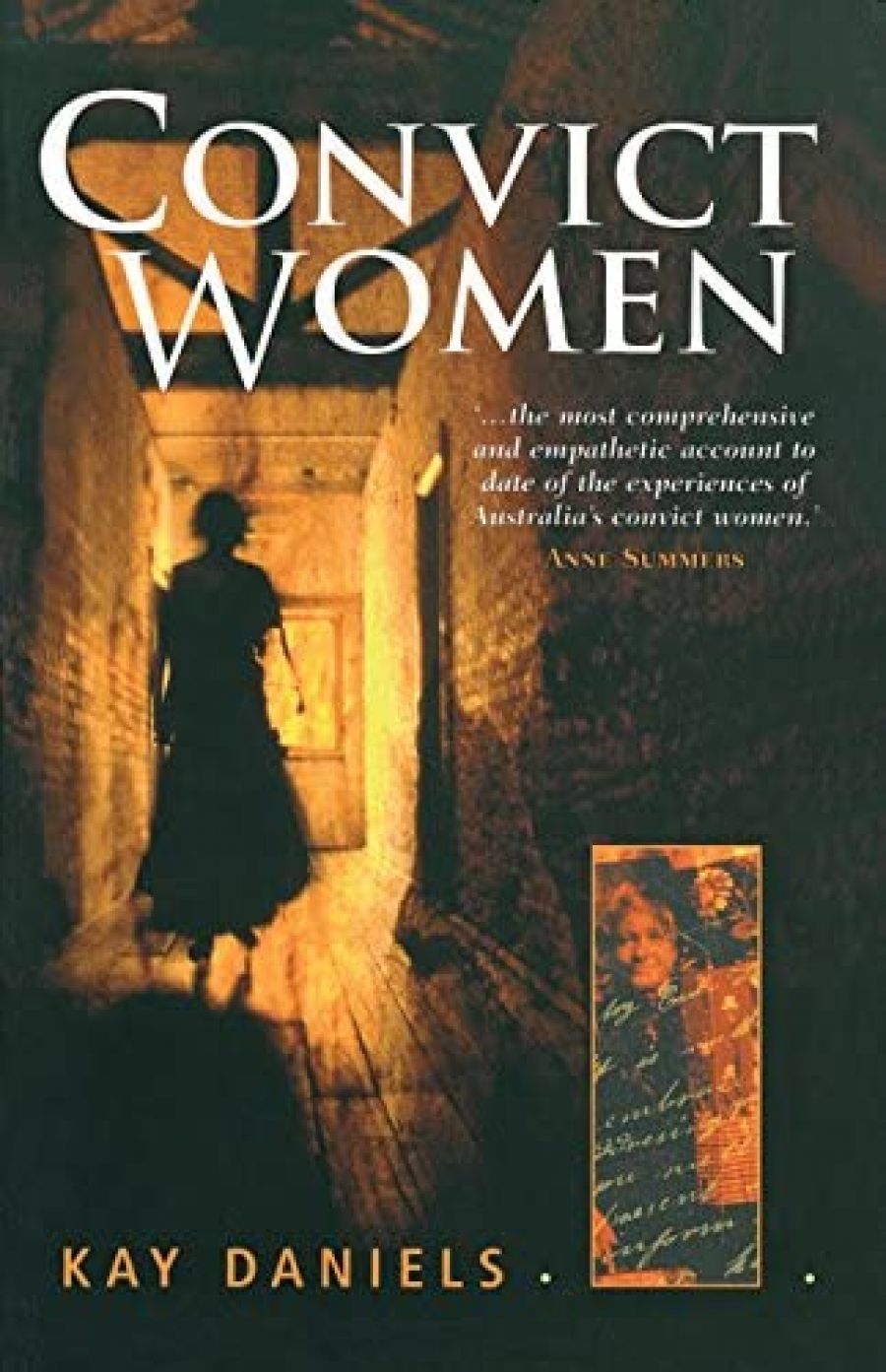
- Free Article: No
- Contents Category: Australian History
- Review Article: Yes
- Online Only: No
- Custom Highlight Text:
In a recent history of punishment in Australia, Mark Finnane observes that there is a ‘seemingly inexhaustible vein of convict history’. This has been especially true most recently of the history of convict women and the increasing number of accounts which are now being published in this field is to be welcomed. These studies offer a corrective to histories which have relegated convict women to a footnote, and, perhaps more significantly, some historians have attempted to reconceptualise and recast our understandings of colonialism, gender, power, and sexuality during the nineteenth century.
- Book 1 Title: Convict Women
- Book 1 Biblio: Allen & Unwin, $24.95 pb, 276 pp
- Book 1 Readings Link: booktopia.kh4ffx.net/MXvmRJ
In Convict Women, Daniels has retrieved the experiences and the activities of convict women in a detailed, readable and accessible account. Her work covers the period of transportation, the arrival of ships to Australia and the management of convict women, pointing out that convict management was exercised differently in different places and over a period of time. This is no truer than in the system of assignment, which, Daniels argues, held out both ‘a transition to freedom and a foretaste of it’. The activities which she describes capture the nature of convict women’s direct encounters with their masters and with the state which administered them. The female prisons, she argues, failed to reform through punishment and she describes these sites as both places of refuge and punishment. For Daniels, the women’s subculture which emerges within them, points to a collective, subversive response to the state’s power. In the chapter on prostitution Daniels highlights convict women’s vulnerability and their resilience. Finally, she reflects on whether these women would have been better or worse off, if they had stayed at home. In these chapters, Daniels encapsulates the predicament of convict women in a colourful and vivid way; she brings alive their stories enhancing our appreciation of the situations they found themselves in, and illuminating how they responded to the vagaries of convict life.
Daniels’ main purpose is to look at the ‘interaction between policy and administration on the one hand and the actions and experience of convict women on the other’. Her key, concern is to explore the relationship between convict women and the state. The nature of this relationship has been the source of much debate amongst historians who have asked, was the colonial state harsh in its treatment of convicts? What power did convict women have in relation to it? What gender ideologies informed state policies?
In this retelling, Daniels misses an opportunity to explore the nature of this state which forms the basis of her discussion. The complexity, dynamism and fluidity of the colonial state could have been given more attention. The ‘state’ is faceless, with no identity; it is disembodied and disengaged. An acknowledgment of the white, masculine and ruling-class nature of the British colonial state and its imperialist project which introduced a set of ideologies about race, gender and class is missing. Given this omission, the sexual dynamics of colonialism remain inexplicable, as are the gendered and racial understandings of convict women. In presenting the state as a monolithic entity, the relationship Daniels seeks to capture emerges as static and flat.
The developments Daniels discusses take place within a broader canvas of the shifting complexities of transportation and colonialism which is needed to be foregrounded to make sense of the processes she describes. What preconceived ideas did convicts and others arrive with? How did their views and behaviour change over time? What sorts of ideas and understandings about sexuality, femininity, masculinity, and race did they bring with them? An attention to detail of periodisation, time and especially place, would have captured the diversity of ‘the relationship’ she attempts to make at the centre of her work.
I found one of the most interesting contributions of this book to be Daniels’ discussion of the ways in which the memory and heritage of female convicts is now being shaped. In the final chapter on heritage, Daniels considers how the sites of the female factories have been understood over time. Reading the narrative of convict women through these historical sites illuminates the past abhorrence to, and current fascination with, convict women. A focus on this aspect not only takes the discussion into a more engaging and critical understanding of the place of convictism in our histories but also forces us to look elsewhere for our empirical archive of their activities. The current archaeological survey undertaken by the Tasmanian National Parks and Wildlife Service, for instance, is providing historians with a detailed understanding of the material culture of the Ross Prison, which is absent from existing records.
Convict Women examines the fascinating lives of female convicts in compelling detail. A fuller understanding of their predicament could have been enhanced by a broader appreciation of the complexity of the colonial world which both influenced their path and which they in turn shaped.


Comments powered by CComment